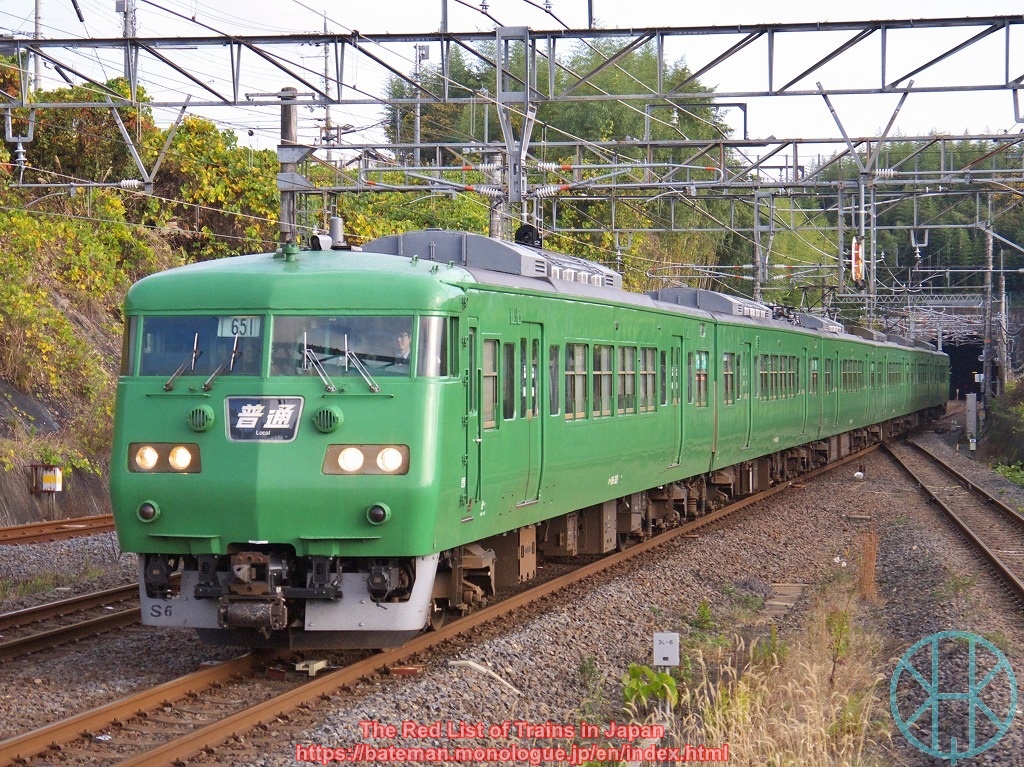JNR 117 series

Data (as of 29 Nov 2025)
| Status: | Critically Endangered |
| (JR West) | |
| Extinct | |
| (JR Central) | |
| Constructed in: | 1979-82, 1986 |
| Number built: | 216 |
| Registered: | 6* |
*Excluding a preserved front carriage.
History
The 117 series is a type of suburban train for New Rapid services on Tokaido and San-yo Main Lines. Unlike other trains of Japanese National Railways, the 117 series was designed specifically for Osaka and nearby cities. Each unit consists of four, six or eight coaches, and there are two sets of doors per carriage with transverse seating. In 1982, JNR introduced the series to Tokaido Main Line in Nagoya area as well.
The 117 series looks completely different from other rolling stock at that time. The front end is streamlined, painted beige with brown bands that resembles "Express Service" trains in the 1930s. Transverse seating can be turned by hand so that direction of most seats can be forward at any time. When 185 series was introduced to Tokyo a year later, they were often regarded as essentially the same. It is not hard to imagine that people in Tokyo dissatisfied with the 185 series, as the 117 series provides the same quality of seats with no extra fares.
The 117 series were initially formed of six coaches and used on New Rapid services in Nagoya and Osaka areas, running at 110 km/h (69 mph). Those in Nagoya were shortened to four coaches in 1986, and also entered service on Chuo Main Line. They were distributed to JR Central and JR West when JNR was privatised in 1987.
After the privatisation, both JRs felt it difficult to use them, as two-door trains triggered congestion and delays at peak times. Furthermore, both companies developed their own trains that can run faster than the 117 series. Hence, JR Central had been using on Tokaido Main Line during rush hours, but for services that were less crowded than others. Some services were formed of 12 coaches, using three units at the same time. They were replaced with 313 series by 2013.
Meanwhile, those owned by JR West became redundant in the 1990s, but the company did not simply throw them away. They were shortened to four coaches and reallocated to other lines, such as Fukuchiyama, Hokuriku Main, Kosei, Kusatsu and Nara Lines, as well as Wakayama, Okayama and Shimonoseki areas. Seating of some units were converted to longitudinal, to ease congestion, while those reallocated to rural lines became compatible with driver-only operation. All units were withdrawn from regular services by July 2023.
In 2020, JR West converted a redundant six-carriage unit to a sleeper train called WEST EXPRESS GINGA. The company envisages that young people and foreign tourists use his night train with affordable price.
Current Operations & Future Prospects
WEST EXPRESS GINGA is now the only operational 117 series, which runs various lines on certain days.
Photos

Those in Kyoto were painted green, and looked like a frog.

Those in Okayama were painted yellow after the mid-2010s.
(Updated: 29 Nov 2025)
